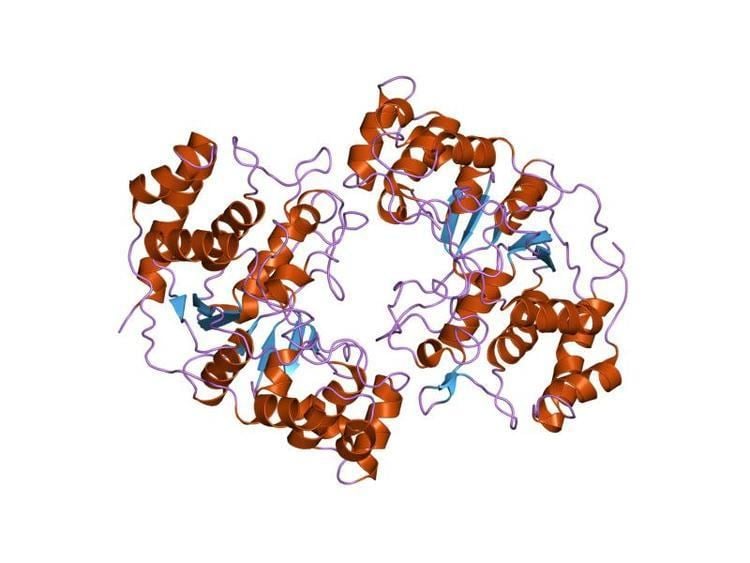Symbol XPG_N Pfam clan CL0280 PROSITE PDOC00658 | Pfam PF00752 InterPro IPR006085 SCOP 1a77 | |
 | ||
In molecular biology the protein domain XPG refers to, in this case, the N-terminus of XPG. The XPG protein can be corrected by a 133 kDa nuclear protein, XPGC. XPGC is an acidic protein that confers normal ultraviolet (UV) light resistance. It is a magnesium-dependent, single-strand DNA endonuclease that makes structure-specific endonucleolytic incisions in a DNA substrate containing a duplex region and single-stranded arms. XPGC cleaves one strand of the duplex at the border with the single-stranded region.
Contents
Homology
XPG belongs to a family of proteins that includes:
Sequence alignment of this family of proteins reveals that similarities are largely confined to two regions. The first is located at the N-terminal extremity (N-region) and corresponds to the first 95 to 105 amino acids. The second region is internal (I-region) and found towards the C terminus; it spans about 140 residues and contains a highly conserved core of 27 amino acids that includes a conserved pentapeptide (E-A-[DE]-A-[QS]). It is possible that the conserved acidic residues are involved in the catalytic mechanism of DNA excision repair in XPG. The amino acid linking the N- and I-regions are not conserved.
Xeroderma pigmentosum
Xeroderma pigmentosum (XP) is a human autosomal recessive disease, characterised by a high incidence of sunlight-induced skin cancer. People's skin cells with this condition are hypersensitive to ultraviolet light, due to defects in the incision step of DNA excision repair. There are a minimum of seven genetic complementation groups involved in this pathway: XP-A to XP-G. XP-G is one of the most rare and phenotypically heterogeneous of XP, showing anything from slight to extreme dysfunction in DNA excision repair.
